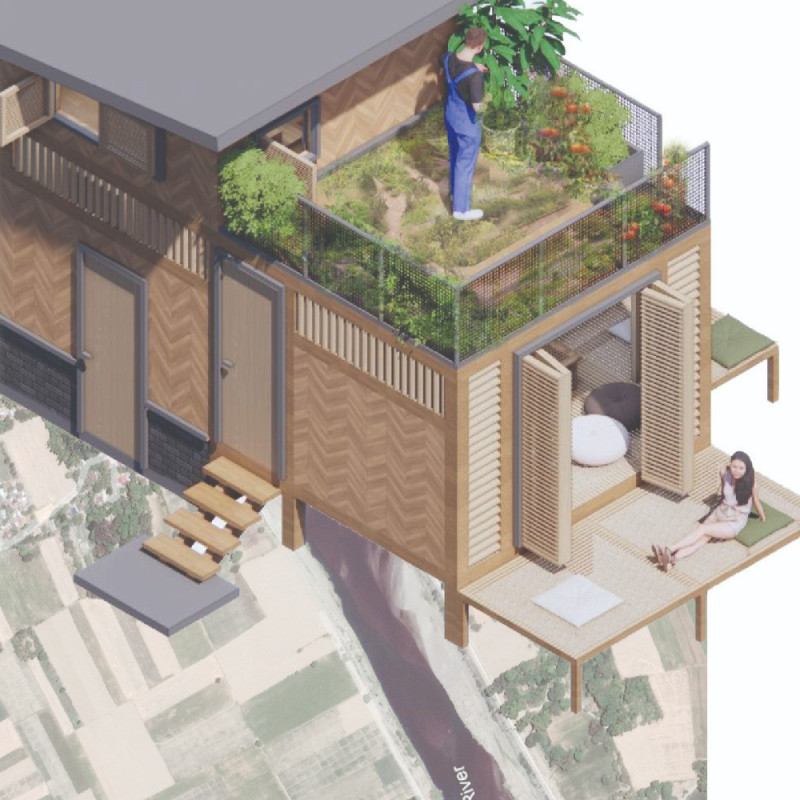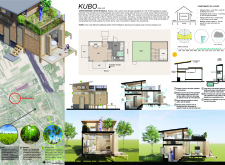5 key facts about this project
The KUBO project emphasizes form and layout, featuring a two-story structure with a strategic footprint of approximately 180 square meters. The design incorporates functional zones, including workspaces, living areas, and essential amenities. Thoughtfully arranged, the interior layout fosters accessibility and efficiency. Expansive openings allow for ample natural light and ventilation, enhancing the overall comfort of the dwelling. The incorporation of an upper terrace provides space for gardening, contributing to both aesthetic appeal and sustainability.
Sustainable design principles are at the project's core, resulting in unique features that distinguish it from conventional housing solutions. The KUBO utilizes locally sourced materials, including bamboo, coconut tree products, and rice husk ash, which collectively support an eco-friendly construction approach. Bamboo serves as a structural element and cladding, providing insulation and ventilation properties. Coconut derivatives contribute to the durability of the structure, while rice husk ash enhances thermal performance.
The project employs passive cooling strategies to address the tropical climate of Manila. Features such as wide eaves, cross-ventilation through bamboo louvers, and strategically positioned windows reduce energy dependency on artificial cooling systems. The inclusion of a green roof facilitates rainwater management and encourages biodiversity, supporting an environmentally responsible lifestyle. These design choices reflect a commitment to sustainability and a thoughtful response to local climatic conditions.
The KUBO project engages with larger social and environmental trends, focusing on community living and ecological awareness. Its design not only serves as a physical shelter but also promotes a self-sufficient lifestyle, allowing residents to reconnect with nature. This holistic approach demonstrates the potential of architecture to address contemporary challenges while respecting cultural heritage. For more detailed insights into the project's architectural plans, sections, and design ideas, readers are encouraged to explore the full presentation of the KUBO project.























